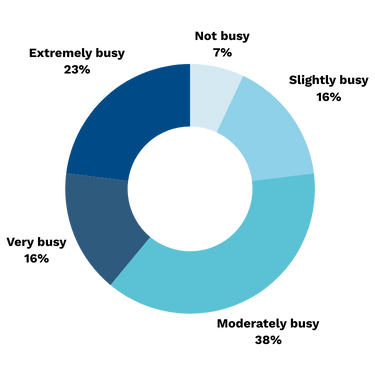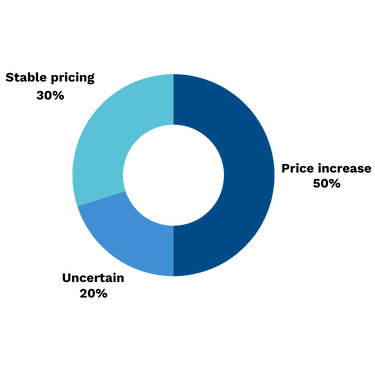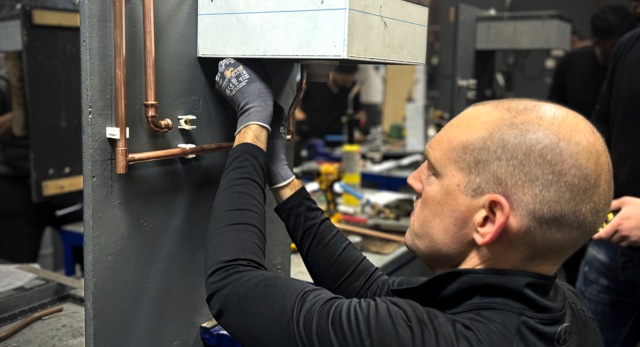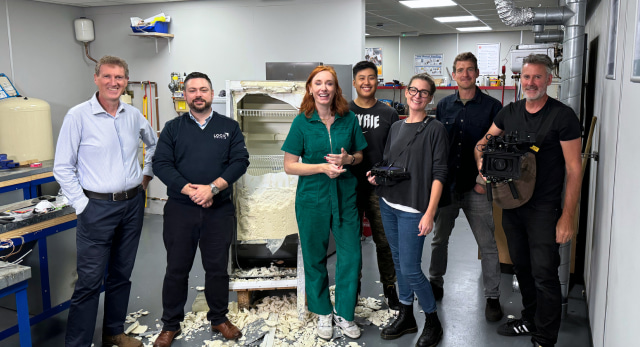The plumbing industry plays a role in maintaining water and heating systems for homes and businesses across the UK. As demand for skilled plumbers remains high, understanding the most common plumbing jobs and their costs helps property owners and businesses budget effectively while ensuring fair pricing for services. Additionally, it provides an insight for plumbers to see how their prices compare. Using data from the plumbers that we have trained, this insight outlines key plumbing job, average costs, pricing structures, and the factors that influence rates in 2025.
Whether you are a homeowner, property manager, or plumber, this resource provides essential insights into the UK plumbing sector.
Plumber’s Rates
Understanding the cost structure of plumbing services is key to planning budgets and avoiding unexpected expenses. Plumbing rates can vary a lot. They depend on the plumber’s experience, the job’s size, and if it is a scheduled service or an emergency call.
Hourly Rates
Plumber’s hourly rates typically range between £20 and £95 per hour, depending on experience and job complexity. The average hourly rate is £45 per hour.
Day Rates
Plumber’s day rates vary from £180 to £700 per day, with commercial plumbers generally charging more. The average daily rate is £331 per day.
Emergency Call-Outs
Initial fees range from £40–£150 for the first hour, with incremental charges for additional time.
These rates reflect a combination of standard repairs, maintenance tasks, and large-scale installations. Many plumbing professionals have set prices based on the type of work. Some also give discounts for repeat customers or long-term service contracts.
Most Common Plumbing Jobs and Their Costs
Based on a survey of experienced plumbers, here are the most frequently requested jobs and their typical costs:
| Plumbing Job | Cheapest Cost (£) | Most Expensive Cost (£) | Average Cost (£) |
| Tap/shower replacements | 80 | 150 | 115 |
| Leak repairs | 80 | 250 | 165 |
| Shower pump repairs | 150 | 300 | 225 |
| Cold water cistern replacement | 250 | 350 | 300 |
| Hot water cylinder replacement | 400 | 600 | 500 |
| Drainage work | 1,000 | 2,500 | 1,750 |
| Plumbing first fix | 1,500 | 3,000 | 2,250 |
| Bathroom installation | 4,000 | 6,000 | 5,000 |
| Air Source Heat Pump (ASHP) installation | 8,000 | 12,000 | 10,000 |
Note: Costs vary based on location, scope of work, and materials.
This table provides a clear breakdown of common plumbing jobs and their associated costs in 2025. For instance, tap or shower replacements range from £80 to £150, with an average cost of £115. This not only serves as a plumber’s price list UK but also addresses key queries such as how much do plumbers charge per hour, plumber day rate, and plumber call-out fees.
By understanding these figures, homeowners and property managers can better plan their budgets, while professionals gain valuable insights into current market trends.
Key Factors Influencing Plumbing Costs
Several key elements affect plumbing service pricing, making it essential for customers to understand what contributes to cost variations. Here are the main factors that influence the costs of plumbing jobs:
- Scope of Work – Repairs, such as fixing a leaky tap, are significantly cheaper than large-scale installations like fitting a full bathroom suite or installing a new heating system.
- Materials & Market Conditions – Costs change based on the materials chosen. Premium fixtures and eco-friendly options usually cost more. Also, 70% of participants noticed a rise in material costs in the past year. Inflation and supplier prices are affecting job costs.
- Location – Plumbers in major cities, particularly in London, generally charge higher fees compared to those in rural areas, reflecting the increased cost of living and demand for services.
- Experience – Highly experienced plumbers tend to charge higher rates due to their efficiency, certifications, and specialist skills in areas like renewable heating systems or complex drainage solutions.
- Repeat vs. New Clients – Survey data shows that plumbers with a high percentage of repeat customers often provide slightly discounted rates for loyal clients.
By understanding these factors, customers can better plan their plumbing needs, while plumbers can dial in their pricing to remain competitive within the industry.
Plumbers’ Current Workload
Understanding the current workload of plumbers provides valuable insights into industry demand and service availability. Based on the latest survey data, the distribution of workload levels among plumbing professionals is as follows:

- Not busy: Plenty of capacity for additional work – 7% of responses
- Slightly busy: Rarely overwhelmed – 16% of responses
- Moderately busy: Comfortable with occasional peaks – 38% of responses
- Very busy: Manageable but challenging – 16% of responses
- Extremely busy: Struggling to manage the workload – 23% of responses
The majority of plumbers report being moderately to extremely busy, indicating strong demand for plumbing services. However, a smaller portion of professionals experience lighter workloads, suggesting regional or seasonal variations in demand. Homeowners and businesses seeking plumbing services may benefit from scheduling work in advance to secure availability.
How Customers Respond to Pricing
Customer reactions to pricing vary based on individual expectations, perceived value, and market awareness. Our data shows that:

- 54% of customers accept prices without question.
- 32% of customers compare prices with competitors before booking a plumber.
- 7% of customers question pricing before proceeding with the service.
- 7% of customers ask for discounts.
As a plumber, knowing how your customers react to pricing can help you adjust your communication and pricing strategies. For example, showing clear pricing details can build trust with clients who care about costs. On the other hand, emphasising service quality and reliability may attract those who are less concerned about price.
Will Plumbing Prices Increase in 2025?
The plumbing industry anticipates potential price adjustments in 2025, influenced by various economic factors. Insights from plumbers that have trained with us reveal:

-
50% predict stable pricing, suggesting that competitive market pressures and efforts to maintain customer affordability will prevent significant increases. These professionals may focus on efficiency and cost-control measures to sustain current pricing structures.
-
30% predict prices will rise, claiming that increasing fuel costs, national insurance contributions, and labor expenses and most of all, the increase in material costs, are the main factors in price increases. These factors contribute to higher operational costs, which may be passed on to consumers.
-
20% are uncertain about pricing trends, acknowledging the unpredictable nature of economic conditions and their impact on the industry.
Respondents who anticipate a rise in plumbing prices in 2025 have highlighted key factors contributing to this expectation:
Materials
A significant factor contributing to potential price increases is the rise in material costs. 70% of respondents have seen a rise in material costs over the past year. Prices have gone up by an average of 5% to 20%. One individual even reported an increase of 400% for specific materials. These substantial hikes directly impact overall project costs, making it challenging for plumbers to maintain current pricing structures.
Increased Operational Costs
Rising fuel expenses and higher employer National Insurance contributions are significant concerns. One respondent noted that these costs are being transferred to clients, leading to elevated service charges.
Escalating Overheads
The surge in administrative responsibilities, particularly with certifications like MCS, coupled with substantial increases in staff wages, office maintenance, energy bills, and vehicle replacement costs, are straining businesses. A respondent emphasised the unsustainable nature of absorbing these additional expenses without adjusting service prices.
Geographical Constraints
Operating within certain areas, such as inside the M25, has become less viable because of ULEZ and the increased parking costs.
Economic Factors
The broader economic environment, including the cost of living crisis and reduced disposable income among clients, affects service demand and pricing flexibility.
Collectively, these factors contribute to the anticipated increase in the cost of plumbing jobs.
Conclusion
Plumbing tasks ranging from straightforward leak repairs to complete bathroom renovations, will continue to be a cornerstone of UK property maintenance in 2025. Costs can fluctuate based on job scope, materials, and location, making it crucial for homeowners, property managers, and plumbers alike to stay updated on pricing trends and industry regulations.
If you’re exploring a plumbing career or looking to refine your skills, consider our plumbing courses. By keeping pace with evolving industry standards, obtaining the right qualifications, and staying informed about market changes, you can provide high-quality services and ensure the well-being of clients and properties.
Remember: Every job is unique, so always consult qualified professionals for precise quotes and to maintain safety standards. With the right information and planning, you’ll be well-prepared to navigate the plumbing landscape in 2025.









